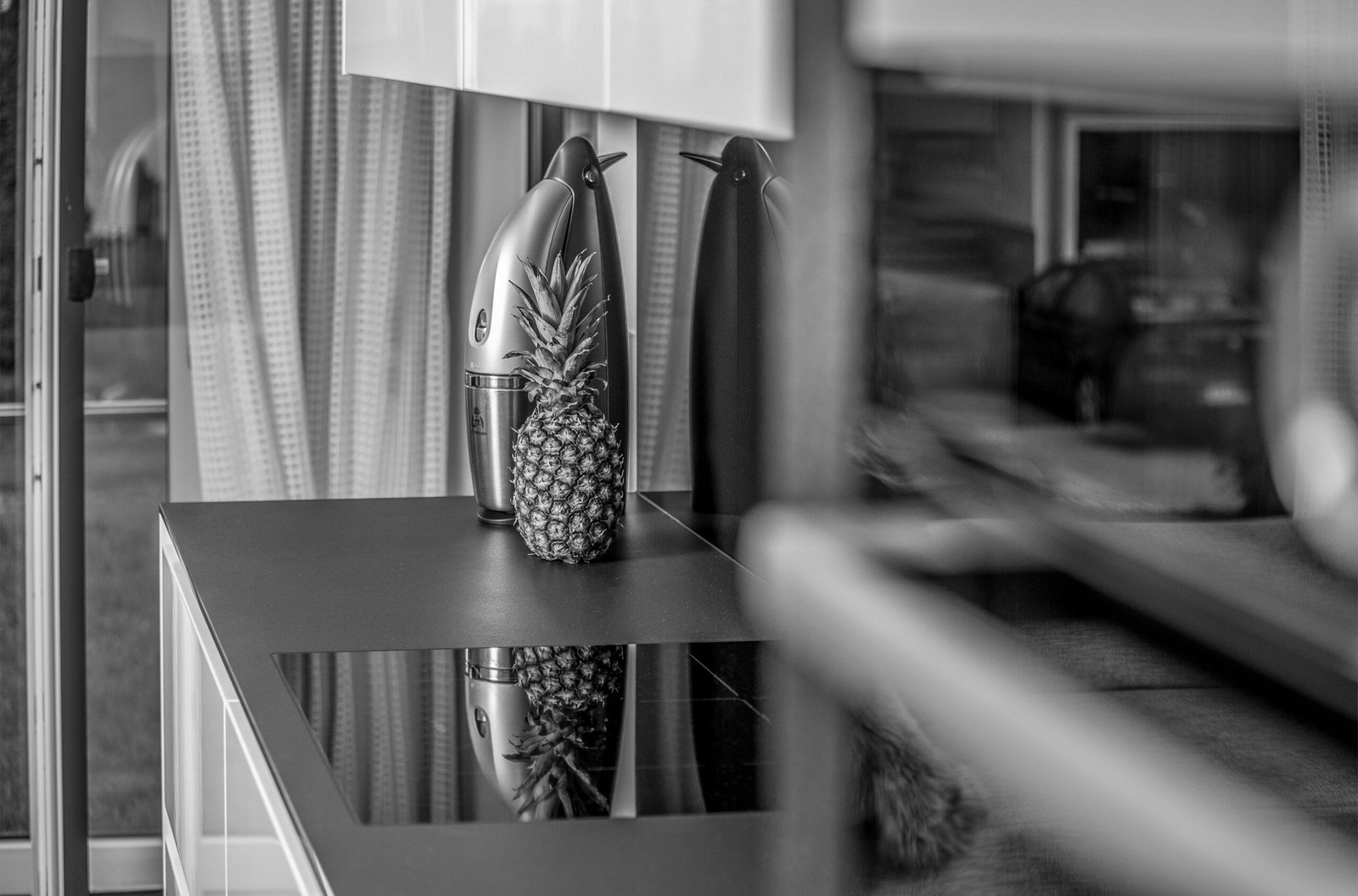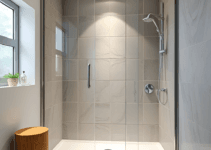Understanding the Impact of Clutter on Mental Health
Clutter is more than just a physical nuisance; it can have profound psychological effects that exacerbate feelings of stress and overwhelm. Research has shown that cluttered environments are directly linked to increased levels of anxiety and stress. When our surroundings are chaotic, it can be challenging to focus, leading to reduced productivity and impaired decision-making.

Please, read our post and do not forget to check our YouTube channel “Grig Stamate”:
https://www.youtube.com/@GrigStamate
You will find there, thousands of designing, furnishing, and decorating ideas for your home interior and outdoors.
Allow me to mention one of them:
Small Spaces #8, 50 Clever Organized Entrance Way Design Ideas (video)
Psychological studies have delved into the intricacies of how clutter affects mental health. For instance, a study published in the Journal of Environmental Psychology found that individuals with cluttered homes exhibited higher levels of the stress hormone cortisol. This heightened stress response can perpetuate a vicious cycle, where clutter leads to stress, and stress makes it harder to tackle clutter, further contributing to mental fatigue.
Experts in mental health emphasize that a cluttered space can create a sense of chaos and confusion. This disarray can hinder one’s ability to relax and unwind, making it difficult to achieve mental clarity. According to Dr. Sherrie Bourg Carter, a psychologist and author, clutter can overload the senses, causing our brains to work overtime, which can be mentally exhausting. Moreover, it can serve as a constant visual reminder of tasks that are incomplete, adding to the feeling of being overwhelmed.
In addition to the immediate effects on stress and anxiety, clutter can also impact long-term mental well-being. A cluttered environment can lead to procrastination and avoidance behaviors, further compounding feelings of inadequacy and helplessness. The inability to find necessary items in a cluttered space can result in frustration and a sense of loss of control, which can detract from overall life satisfaction.
Understanding the impact of clutter on mental health underscores the importance of addressing it. By recognizing how a cluttered environment contributes to stress and anxiety, individuals can be more motivated to implement practical strategies to declutter their spaces. This not only creates a more organized physical environment but also fosters a sense of mental peace and well-being, laying the groundwork for a more balanced and productive life.
10 Practical Tricks to Start Decluttering
Feeling overwhelmed by clutter can be daunting, but breaking down the task into manageable steps can make the process less intimidating. Here are ten practical tricks to help you start decluttering effectively:
1. Start Small
Begin by targeting a small area, such as a single drawer or surface. This approach prevents you from feeling overwhelmed and allows you to see immediate progress. Choose a spot that you encounter daily, as clearing this space can provide a quick sense of accomplishment.
2. Set a Timer
Allocate a specific amount of time for decluttering, such as 15 to 20 minutes. Setting a timer helps to create a sense of urgency and prevents burnout. Use this time to focus solely on decluttering without distractions.
3. Use the Four-Box Method
Grab four boxes and label them as Keep, Donate, Toss, and Relocate. This method helps in making quick decisions about items. Place each item into the appropriate box, giving you a clear plan for each item’s future.
4. Tackle One Room at a Time
Focus on decluttering one room before moving onto the next. This strategy keeps you from feeling scattered and allows for a more organized approach. Start with the room that causes you the most stress and work your way through the house.
5. Create a Decluttering Schedule
Establish a schedule that outlines specific times for decluttering. Whether it’s daily, weekly, or monthly, having a schedule keeps you accountable and ensures consistent progress.
6. Implement the One-In, One-Out Rule
For every new item you bring into your home, remove one existing item. This rule helps maintain a balance and prevents future clutter from accumulating.
7. Prioritize High-Impact Areas
Identify areas in your home that impact your daily life the most, such as the kitchen counter or your desk. Decluttering these spaces first can significantly reduce stress and improve functionality.
8. Keep a Donation Box Handy
Designate a box for items you wish to donate and keep it accessible. As you come across items you no longer need, place them in the donation box. Once the box is full, take it to your local donation center.
9. Digitize Paper Documents
Reduce paper clutter by scanning important documents and storing them digitally. This not only frees up physical space but also makes it easier to organize and retrieve documents when needed.
10. Ask for Help
If the task feels too overwhelming, consider enlisting the help of a friend or family member. Having someone to support you can make the process more manageable and enjoyable.
By implementing these practical tricks, you can start to clear the clutter and create a more organized, stress-free environment. Remember, the key is to take small, manageable steps to ensure sustainable progress without feeling overwhelmed.
Creating a Sustainable Decluttering Routine
Maintaining a clutter-free environment goes beyond the initial decluttering process; it requires the establishment of sustainable routines. By integrating daily, weekly, and monthly habits, one can effectively keep clutter at bay and enjoy a more organized living space. Developing these routines will not only help in managing clutter but also reduce the stress associated with disorganization.
Start with daily habits aimed at maintaining a tidy environment. Allocate a few minutes each day to tidy up commonly used areas such as the kitchen, living room, and bedroom. Simple actions like putting items back in their designated places, clearing countertops, and making the bed can make a significant difference. Incorporating these tasks into your daily chores ensures that clutter doesn’t accumulate over time.
Weekly routines should focus on slightly more extensive decluttering efforts. Set aside a specific day each week for a quick declutter session. This might involve sorting through mail, organizing your workspace, or cleaning out the refrigerator. By dedicating just 30 minutes to an hour each week, you can prevent clutter from becoming overwhelming and keep your living space organized.
For a deeper clean, establish a monthly routine that addresses areas often overlooked in daily and weekly tasks. This could include going through closets, drawers, and storage spaces to discard or donate items you no longer need. A thorough monthly clean-up helps in maintaining a clutter-free environment and provides an opportunity to reassess your belongings, ensuring that everything has a purpose and a place.
Integrating these routines into your lifestyle can be seamless with the help of technology. Utilize apps and reminders to stay on track. Set notifications for your weekly and monthly decluttering sessions, and use organizational apps to keep a check on your progress. By leveraging technology, you can build consistency and make decluttering a natural part of your routine.
Establishing and maintaining these decluttering routines will not only help in keeping your space organized but also contribute to a more peaceful and stress-free environment. A structured approach to decluttering, combined with consistent effort, ensures a sustainable clutter-free living space.
Decluttering is not merely a physical act; it is deeply intertwined with our mental and emotional states. To achieve long-term success in maintaining a clutter-free environment, it is crucial to adopt a mindset that supports this lifestyle. Developing mental strategies and mindset shifts can help transform decluttering into a sustainable habit rather than a one-time event.
Letting Go of Sentimental Items
One of the most challenging aspects of decluttering is letting go of sentimental items. These objects often carry emotional weight, making it difficult to part with them. To address this, consider the concept of ‘selective sentimentalism.’ Keep a few meaningful items that genuinely bring joy and positive memories, and let go of the rest. Photographing sentimental items before discarding them can also provide a sense of retention without the physical clutter.
Combating Perfectionism
Perfectionism can be a significant barrier to successful decluttering. The belief that everything must be perfectly organized can lead to procrastination and an overwhelming sense of inadequacy. Embrace the idea that progress is more important than perfection. Small, consistent efforts can lead to substantial improvements over time. Allow yourself to make imperfect decisions and understand that the process is ongoing.
Embracing a Minimalist Mindset
Adopting a minimalist mindset can be a powerful tool in maintaining a clutter-free space. This involves shifting focus from material possessions to experiences and relationships. Minimalism encourages intentional living, where each item you own serves a purpose or brings joy. Regularly evaluate your belongings and ask yourself if they align with your current lifestyle and values.
Making Decisions About What to Keep and What to Discard
Decision-making is at the core of decluttering. To make informed choices, use criteria such as functionality, joy, and necessity. If an item hasn’t been used in the past year, or if it doesn’t evoke positive feelings, it might be time to let it go. Create a designated ‘maybe’ box for items you’re unsure about and revisit it after a few months to see if you truly miss them.
Dealing with Guilt and Anxiety
Guilt and anxiety often accompany the process of letting go. These emotions can be mitigated by reframing your perspective. Instead of viewing decluttering as a loss, see it as an opportunity to create space for new experiences and personal growth. Donating items to those in need can also provide a sense of purpose and alleviate feelings of guilt.
By integrating these mental strategies and mindset shifts, decluttering can become a positive, ongoing habit that contributes to a more organized and stress-free lifestyle.
Other related posts from our website:
https://howtobuildahouseblog.com/ultimate-guide-to-cleaning-tile-floors-and-grout/
https://howtobuildahouseblog.com/effective-tips-for-cleaning-and-maintaining-streak-free-windows/
Thank you so much for your attention.
Stay tuned. We will upload many other amazing posts to our website and videos onto our YouTube channel.
Thank you so much.
for your time and attention.
Best Regards
See you to another post,
Bye, Bye


